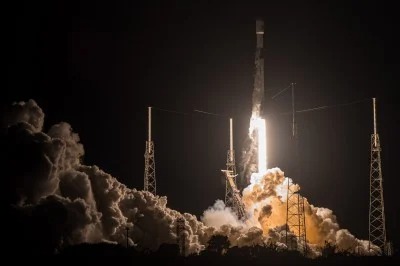Inmarsat, a world leader in global, mobile satellite communications, has announced the successful launch of its latest I-6 F2 spacecraft from the Cape Canaveral Space Force Station aboard a flight proven SpaceX Falcon 9 rocket.
 |
|
The launch saw I-6 F2 lift off from Cape Canaveral, Florida, reaching a top speed of almost 40,000km/h as it left Earth above central Africa. The satellite will now spend several months travelling to its geostationary orbit, 36,000km above the Equator, using its onboard electric propulsion system. It is scheduled to connect its first customers in 2024, following rigorous in-orbit technical testing.
I-6 F2 follows its ‘twin’, I-6 F1, which launched from Japan in late 2021. They are the most sophisticated commercial communications satellites ever and will provide a revolutionary upgrade in Inmarsat’s global coverage services for at least the next 15 years. I-6 F1 is scheduled to connect its first customers later this year.
The new I-6 satellites add further capabilities to Inmarsat’s ORCHESTRA communications network; a unique, global, multi-dimensional, dynamic mesh network that will redefine connectivity at scale with the highest capacity for mobility worldwide. ORCHESTRA enables Inmarsat’s partners and customers to keep pace with their growing data demands and enables them to empower emerging technologies in the future, like autonomous vehicles or flying taxis.
The launch was seen live by Scouts Simon Shemetilo, from London, and Craig Alexander, from Reading, who had a VIP viewing experience to the event. The two were chosen by Astronaut Tim Peake after Scouts from all over the UK entered a competition hosted by Inmarsat and the association. Simon and Craig were judged as submitting the best entries for how satellites can improve life on Earth in the future.
Rajeev Suri, CEO, Inmarsat, said “I want to extend my profound thanks and appreciation to our dedicated employees and partners who have made this launch a reality. Our I-6 programme has been six years in the making. Last night’s launch marked another milestone as we revolutionise global communications at scale.”
“Of course, this is not the end. Along with the I-6s, we will add five more advanced spacecraft to our fleet by 2025 as part of our fully funded technology roadmap. That will allow us to continue to meet our customers’ needs into the 2030s and beyond, while enabling new technologies for a smarter, more connected Earth.”
Inmarsat delivers world leading, innovative, advanced and exceptionally reliable global, mobile communications across the world – in the air, at sea and on land - that are enabling a new generation of commercial, government and mission-critical services. Inmarsat is powering the digitalisation of the maritime industry, making operations more efficient and safer than ever before. It is driving a new era of inflight passenger services for aviation, while ensuring that aircraft can fly with maximum efficiency and safety. Furthermore, Inmarsat is enabling the rapid expansion of the Internet of Things (IoT) and enabling the next wave of world-changing technologies that will underpin the connected society and help build a sustainable future. And now Inmarsat is developing the first-of-its-kind, multi-dimensional communications network of the future, ORCHESTRA.
In November 2021, Inmarsat and Viasat announced the planned combination of the two companies, to create a new leader in global communications.

